Reign 201–269 (traditional) Children Emperor Ōjin | Tenure 192–200 | |
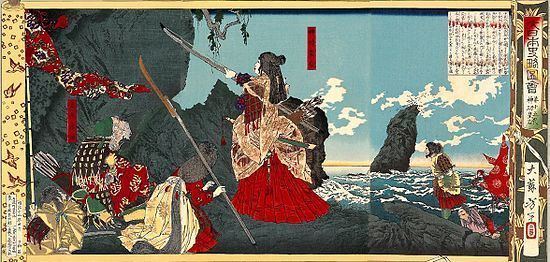 | ||
Successor Emperor Ōjin (traditional) Died 269 AD, Kyoto, Kyoto Prefecture, Japan Parents Okinaga no Sukunu no miko, Kazuraki no Takanukahime Grandchildren Emperor Nintoku, Prince Uji no Wakiiratsuko Similar Emperor Ōjin, Emperor Chūai, Emperor Nintoku, Emperor Jimmu, Yamato Takeru | ||
Empress consort Jingū (神功皇后, Jingū-kōgō), occasionally known as Empress regnant Jingū (神功天皇, Jingū-tennō), was a Japanese empress who ruled beginning in the year 201. The consort to Emperor Chūai, she also served as Regent from the time of her husband's death in 201 until her son Emperor Ōjin acceded to the throne in 269. Up until the Meiji period, Jingū was considered to have been the 15th Japanese imperial ruler, according to the traditional order of succession (hence her alternate title Jingū tennō 神功天皇); but a re-evaluation of the extant historical records caused her name to be removed from that list; and her son, Emperor Ōjin, is today considered to have been the 15th sovereign.
Contents
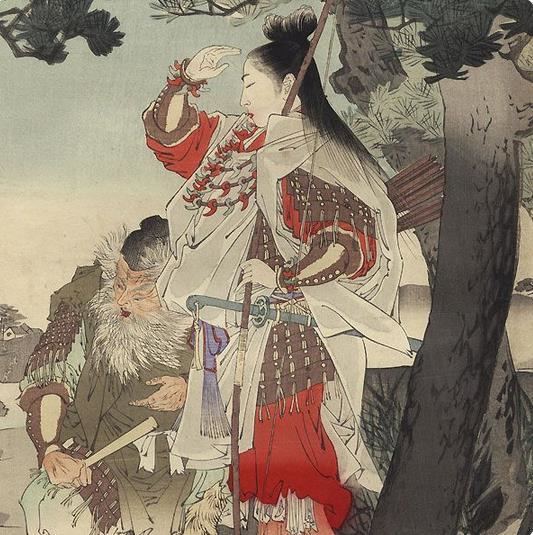
Legendary narrative
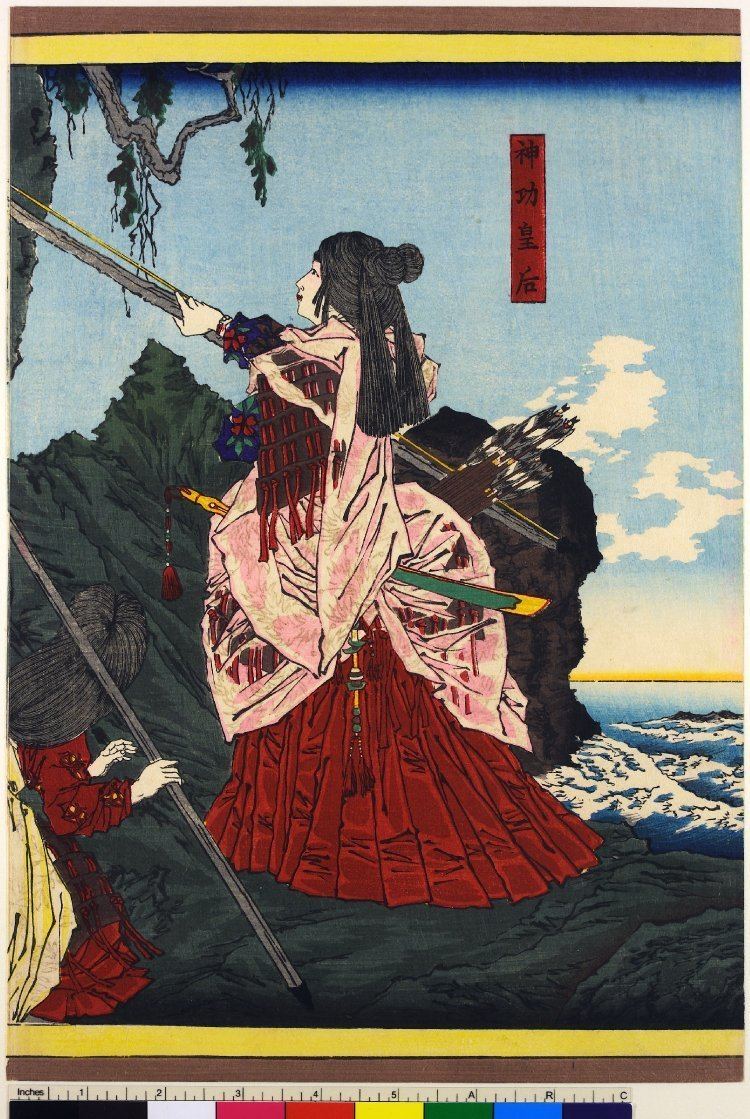
No firm dates can be assigned to this historical figure's life or reign. Jingū is regarded by historians as a "legendary" figure because there is insufficient material available for further verification and study. Jingū's name before her accession to the Chrysanthemum throne is said to have been Okinagatarashi-hime (息長帯比売).
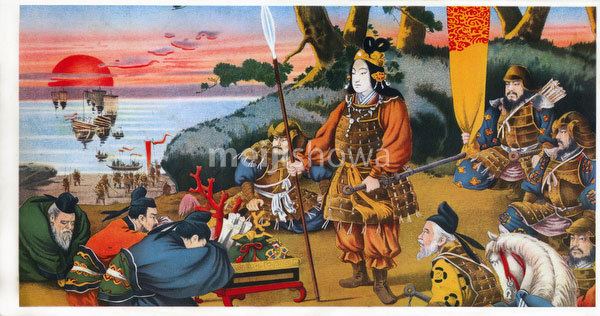
Although the final resting place of this legendary regent/sovereign remains unknown, Jingū's officially designated misasagi or tomb can be visited today at Misasagi-chō in Nara. This kofun-type Imperial tomb is characterized by a keyhole-shaped island located within a wide, water-filled moat.

Kitabatake Chikafusa (1293–1354) and Arai Hakuseki (1657–1725) asserted that she was actually Himiko, the third century shaman-queen of Yamataikoku, and, because Himiko was a historical figure, had to be included as a member of the imperial family by the authors of the Nihon Shoki. Among modern scholars, Naitō Torajirō posits that she is Yamatohime-no-mikoto, while Higo Kazuo suggests that she is Yamato-totohimomoso-hime.
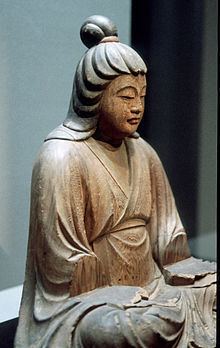
In 1881, Empress Jingū became the first woman to be featured on a Japanese banknote; however, since no actual images of this legendary figure are known to exist, the representation of Jingū which was artistically contrived by Edoardo Chiossone is entirely conjectural. Actually, Chiossione used a female employee of the Govt. Printing Bureau as model. This picture was also used for 1908/14 postage stamps, actually the first postage stamps of Japan to show a woman. A revised design by Yoshida Toyo was used for 1924/37 Jingu design stamps. The usage of a jingu design ended with a new stamp series in 1939.
The Imperial Household has designated an official mausoleum at Saki no Tatanami no ike no e no Misasagi, Nara, in what was formerly Yamato Province.
Excluding the legendary Jingū, there were eight reigning empresses and their successors were most often selected from amongst the males of the paternal Imperial bloodline, which is why some conservative scholars argue that the women's reigns were temporary and that male-only succession tradition must be maintained in the 21st century. Empress Genmei, who was followed on the throne by her daughter, Empress Genshō, remains the sole exception to this conventional argument.
Controversy
According to the Nihon Shoki, she led an army in an invasion of Korea and returned to Japan victorious after three years. However, there is no evidence of her rule in any part of Korea. Her son Ōjin was born following her return. The legend alleges that her son was conceived but unborn when Chūai died. After those three years, the boy was born. Either a period of less than nine months contained three "years" (some seasons), e.g. three harvests, or the paternity of her late husband was just mythical and symbolic, rather than real.
Some believe that Empress Jingū's conquest is only based on the Gwanggaeto Stele. But the legend of Jingū's invasion of the Korean peninsula also appears in the ancient Japanese chronicles Kojiki written in 680 and Nihon Shoki written in 720. In addition, the Nihon Shoki states that Father of Empress Jingū is Emperor Kaika's grandchild and her mother is of the Katsuragi clan.
Some assert that characters were modified and the Japanese presence added on the Gwanggaeto Stele. Today, Japanese and some Chinese scholars discredit the intentionally damaged stele theory based on the study of the stele itself and the pre–Sakō and pre-lime-marred rubbings. Japanese military activities, defeated by Gwanggaeto, occupy half of the stele. The interpretation of the stele is still debated because, whether intentionally or not, the stele was damaged and the missing pieces make it impossible to translate. According to the book "From Paekchae Korea to the Origin of Yamato Japan" the Japanese misinterpreted the Gwanggaeto Stele. The Stele was a tribute to a Korean king, but because of a lack of correct punctuation, the writing can be translated in 4 different ways; this same Stele can be intrepreted as saying Korea crossed the strait and forced Japan into subjugation, depending on where the sentence is punctuated.
The Chinese Book of Song of the Liu Song dynasty, written by the Chinese historian Shen Yue (441–513), notes the Japanese presence in the Korean Peninsula. However, the Liu Song dynasty, as a southern Chinese dynasty of ancient times, had little contact with northeast Asia and most historians in Korea, Japan and elsewhere believe that this dynasty most likely treated Baekje, Samhan, and Yamato Japan as one and the same. It is unlikely that this error was committed with regards to the Sui dynasty and Goguryeo because they were major powers at the time.
The Chinese Book of Sui says that Japan provided military support to Baekje and Silla.
According to the Samguk Sagi ("Chronicles of the Three Kingdoms"), written in 1145, King Asin of Baekje sent his son, prince Jeonji as a hostage in 397. And King Silseong of Silla sent his son in 402; both were attempts to secure military aid from Yamato Japan so that the two nations could continue campaigns they had begun prior to the requests. Further complicating the relationship between the Japanese ruler and Korea is that, according to the Nihon Shoki, Korean prince Amenohiboko came to Japan, and became the grandfather of Tajimamori, who served Emperor Suinin. Whether the Koreans sent hostages or relatives with familial ties to Korea is debated.
